Text
Watch "Lumbini: The Birthplace of Buddha [Why the "Bethlehem" of Buddhism was lost & How was it discovered]" on YouTube
youtube
#buddhism#buddha#lumbini#buddhism in nepal#life of buddha#birth of buddha#where buddha was born#buddhist#buddhist pilgrimage#lumbini nepal#lumbini birthplace of buddha#buddhist sites#buddhist destinations#history of buddhism#history of buddha#Youtube
2 notes
·
View notes
Photo
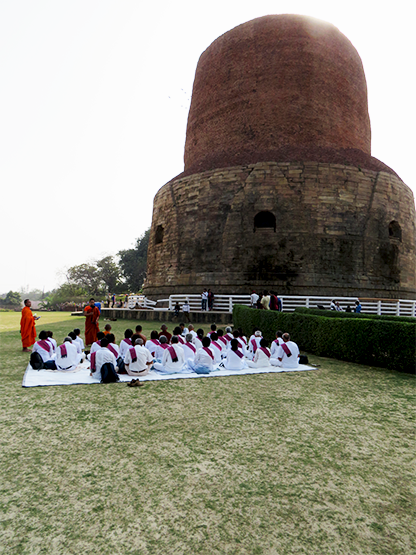
Meditation and chants, Dhamek Stupa (Sarnath):
Meditation on virtues of Buddha and his teachings are essential part of any Buddhist Pilgrimage . The backdrop of Dhamek Stupa in Sarnath provides the most conducive ambience for meditation and chanting of Suttas.
0 notes
Link
Have you ever wondered what all you must be doing during your Buddhist Pilgrimage Tours, or how should you get most out of your once in a lifetime kind of pilgrimage tour to the holiest of the Buddhist sites?
The idea and guidance on why and where a faithful must go for pilgrimage come from Buddha himself, especially from his final discourse to Ven. Ananda on his query about his concern that the monks would no longer be able to see him and pay their respect after his Parinibbana.
#Buddha buddhatemple prayer prayers pray tibet tibetan worldheritage buddhistmonastery mahayana buddhism buddhist monk prostration travelphot#travel tourism tours Bodhgaya Bodhisattvatravels pilgrim Dhamma explore incredibleindia
0 notes
Photo
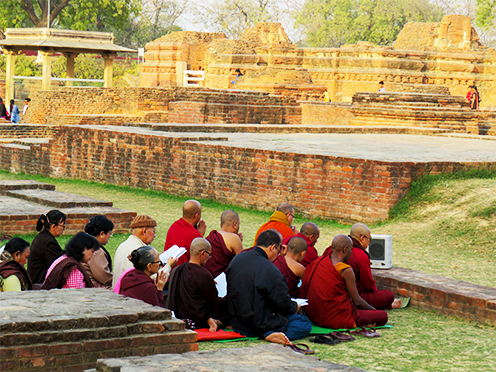
Deer Park, Sarnath
0 notes
Photo
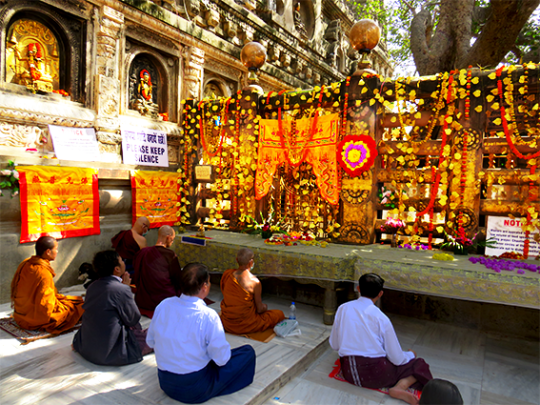
The Vajrasana or Diamond Throne (Mahabodhi temple, Bodhgaya) marks the actual place where Buddha attained supreme enlightenment. A red sandstone Vajrasana built by emperor Asoka in 250 BC , marks the place of enlightenment.
#vajrasana enlightenment spiritualenlightenment enlightened enlightment bodhitree Bodhgaya buddhisttemple buddhism Buddha buddha buddhist pra#prayer pray prayfortheworld prayers traveler travelphoto travelholic travelgram tourism tours tourist india incredibleindia Bodhisattvatrave#Bodhisattvatravels statue asoka historical worldheritage
24 notes
·
View notes
Photo

Turning of the Wheel of Dhamma (1st century AD, Amarawati):
The 1st century carving on limestone depicts the Dharmachakra Pravartana (Turning of wheel of Dharma). This stupa casing slab shows the wheel of Dhamma, empty throne and Buddha's footprint.
#stone statue buddhastatue Buddha lifeofbuddha stupa buddhism buddhist ancientart ancienthistory ancient history historic historical rock scu#sculpture traveler travelphotography travelphoto travelholic traveladdicted amaravati andhrapradesh india incredibleindia tourism tourist to#tours Bodhisattvatravels buddhistpilgrimage
40 notes
·
View notes
Photo

Scenes from the Life of Buddha : 5th century AD, Sarnath (India)- Gupta Period .
Sarnath is one of the four major places of Buddhist pilgrimage recommended by Buddha to be visited by faithful.
#lifeofbuddha buddhatemple buddhastatue buddhistcircuit Sarnath varanasi buddhatemple Buddha buddhistpilgrimage buddhist buddhism ancientart#historic history rockart statue lifeoftravel life scene Dhamma deerpark dhamekstupa enlightenment explore incredibleindia india tourism tour
25 notes
·
View notes
Photo
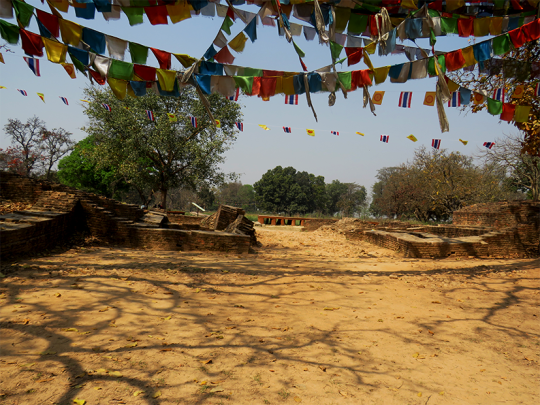
Ruins of the Ancient Kingdom of Kapilvastu, Nepal:
Kapilvastu, the capital of Sakyan Kingdom and the place where Siddhartha spent his 29 years, is around 27 km from Lumbini at the present day Tilaurakot (in Nepal). This is also the place where Siddhartha renounced the material world in search of enlightenment. The ruins of Kapilvastu include the remains of the fortification wall & eastern and western gates. The Eastern gate, through which Siddhartha took renunciation, is called the Mahabhiniskramana Dwara.
#Buddha lifeofbuddha lifeoftravel Lumbini kapilvastu buddhism birthofbuddha traveler travelphotography travelphoto#travelphotography travelphoto traveladdicted travelholic travelgram tourism tourist nepaltourism nepal Dhamma religion history ancient ancie#ancienthistory explore meditation picture pictures spiritual tours traveller ruins
0 notes
Photo

Dancing Clan members - Bhimbetka Rock Shelters (8000 BC to medieval age) :
The prehistoric painting depicts dancing tribe members with two members playing musical instruments. Bhimbetka Rock Shelters is a world heritage site and archeological site having more than 500 rock shelters depicting the life of the prehistoric cave dwellers. The shelters contain rock paintings from Paeleolithic, Mesolithic and Neolithic age upto historical times.
#history ancienthistory archeology archeological historic india neolithic tribal rock rockart#ancient ancientart travelphotography travelphoto traveler traveladdicted tourism india photo photooftheday#tours art dance dancer traditionalart painting paintings paint painter music worldheritage
0 notes
Photo

Parinibbana Buddha (World Peace Pagoda, Lumbini, Nepal) :
Buddha passed away in Kushinagar at the age of eighty, on the full moon day of wesak month ,near the river Hiranyawati. Buddha was lying on his site side between two sal trees with. His head facing north , with all deities in attendance.
#Lumbini worldpeacepagoda Kushinagar religion peace pagoda stupa buddhisminjapan buddhism Buddha lifeofbuddha#traveler tourism nepaltourism deathofbuddha nepal buddhatemple buddhastatue buddhist buddhistcircuit photos#traveladdicted travelholic travels travelguide travel travelblogger traveling travelingram tours
1 note
·
View note
Photo

Mahaparinibbana Stupa and Temple (Kushinagar)
The Mahaparinibbana Stupa stands immediately behind the Mahaparinibbana temple. This 40 feet high stupa was built by the Maurayan Emperor Asoka in the 3rd century BC, and marks the exact spot of death of Buddha. It was renovated in the early 20th century. Originally the height of this stupa was 200 feet and it enshrines the bodily relics of Buddha. The ruins of Buddhist monasteries, built during the 1st century AD to 10th century AD could be seen around the Buddhist temple.
#deathofbuddha parinibbana Buddha Kushinagar travelphotography tourism traveler travelphoto traveladdicted travelholic travelgram tours touri#tourist tourismindia buddhistmonastery buddhistmonastery buddhism ancienthistory history asoka#buddhateachings Dhamma explore goodvibes instagram incredibleindia lifeofbuddha meditation monastry mindfulness picoftheday
0 notes
Photo

Votive Stupas: Nalanda Mahavihara (5th to 10th Century AD)
Nalanda, a “UNESCO World Heritage Site” was the home of a famous university and is situated around 70 km from Bodhgaya and 100 km south of Patna. Two chief disciples of Buddha, Sariputra and Moggallana, belonged to Nalanda. This was possibly the first international residential university in world, where more than 2,000 teachers and 10,000 monk students from all over the Buddhist world lived and studied more than 100 subjects. The university was constructed in a well-planned manner with north – south orientations, temples situated on the eastern side and monasteries on the western side. Today, ruins of 5 temples and 10 monasteries have been excavated at the site built between 5th to 10thcentury AD.
0 notes
Photo

Buddha, World Pagoda: Rajgir, Bihar (India)
The world Peace Pagoda on the top of a hill overlooking the Vulture peak. Vulture peak was one of Buddha's most favourite places and he preached several of his famous discourse including the Lotus Sutta and the Wisdom Sutta.
0 notes
Photo

Buddha Image , Mulagandkuti Vihara (Sarnath, India)
Built by the Maha Bodhi Society of India, in 1931 , with the efforts of Ven. Anagrika Dharmpala. Ven. Anagrika played key role in the preservation and restoration of Buddhist Sites in India.
0 notes
Text
Kaushambi

Kaushambi: Known for famous buddhist king Udayana, who was born on the same day the Buddha was born (Sahajata of Buddha). Remains of fortification built between 1000 BC to 500 AD has been excavated on the banks of river yamuna.
2 notes
·
View notes
Text
Cetiya (Buddhist temple): Nalanda Mahavihar

Cetiya (Buddhist temple): Nalanda Mahavihar ruins (5th century to 12th century AD), one of the first universities in world. .
0 notes
Photo
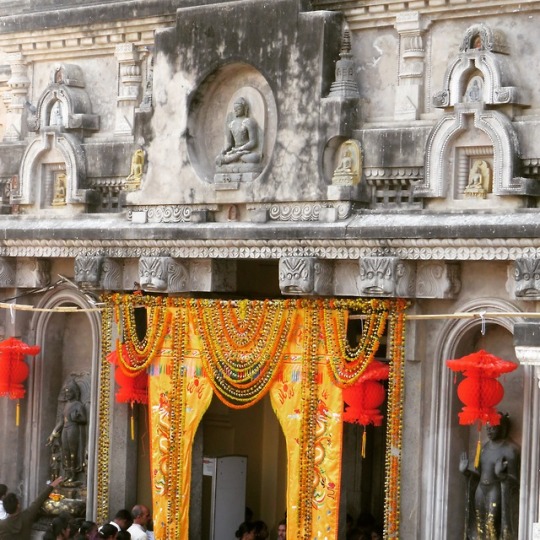
Mahabodhi Temple, Bodhagaya : The temple of enlightenment of Buddha !!
0 notes